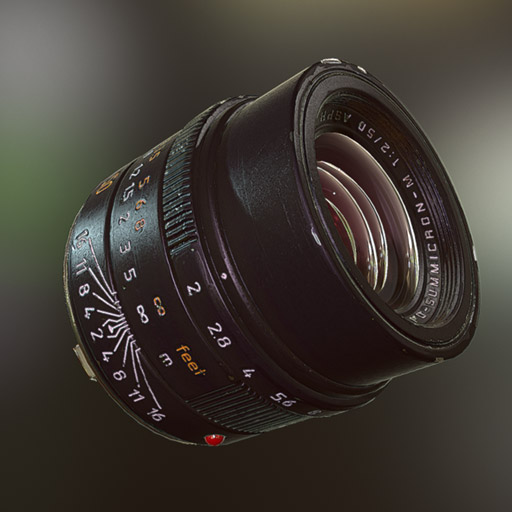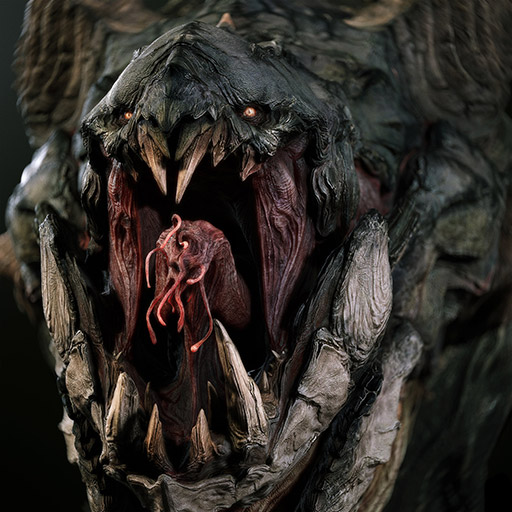
Over the past 9 months or so, I’ve been part of a small CGC team that is focusing on making games with Blender and Unity. This is a new push for us since traditionally we favor movie/FX workflows and techniques on the Blender side. The push was motivated by a survey where we polled our users and a significant majority desired 3D training in the context of game development rather than the context of movies/animation/VFX.
NOTE: 3D production is commonly categorized into either “game production” or “everything else”. Where “game production” is pretty obvious and “everything else” includes movie VFX, feature animation, commercials, architectural visualization, etc. Another way of looking at it is “game production” involves real-time rendering and “everything else” involves non-realtime rendering - or “offline rendering” - like Cycles. For the rest of this article, I’m going to refer to the “everything else” category as “animation” for clarity’s sake.
My background is animation. When I was in college, game students and animation students shared the same classes until about halfway through each degree. At that point, the degrees forked and students had to choose the path of either game dev or animation. I chose animation and my career from then on has been in that vein, from TV commercials to VFX to animated feature film. I brought that context with me into my training for CG Cookie. So when the survey revealed our community’s desire for games, I was surprised and a little skeptical of the shift.
But I’ve been very surprised by the past 9 months. Making games is a ton of fun! In fact - can't believe I'm saying this - I even think games are more fun to make than movies. Here’s why:
1. Real-time is a real good time.
I’ve spent my entire 3D career waiting minutes and hours to render one image as well as days to render short animations. So for the animation side of 3D, patience is not just a virtue; it’s a requirement
But with the game work I’ve been doing lately, there is no waiting. It’s happening before my eyes in real time. “Well sure, but the visuals aren’t even comparable to offline renderers,” says the year-ago-version of myself. Because offline renderers do true, physically accurate calculations of light and materiality. And for decades real time computing was only capable of flimsy illusions to approximate those calculations which looked really bad by comparison, at least in terms of realism.
Well. Modern real time computing is so convincing, it’s made this skeptic a believer. The dawning of heralded “PBR” tech has ushered in a stunning level of realistic lighting and materiality to the world of real time. This means I can create the [majority of] realistic visuals that I aspire to in real time rather than only being able to do that with offline rendering.
This is a huge game-changer that has only been true in recent years. Click these thumbnails to see some of the realtime magic I'm talking about:


2. Interactivity means more bang for your buck.
Everything about movie VFX, animated films, and TV commercials is ultimately about making something look great according to one camera angle. That’s a pretty small payoff for the effort that goes into building that something.
Any modeler knows what I mean: When you spend a month building a badass character, you can’t just post one image of it online, right? You have to post a series of various angles or a even a turntable. Because you know the effort you spent on the whole character, backward and front, and one angle simply doesn’t do it justice.
With games, the effort you spend building a world is rewarded by you and/or players being able to view that world from every angle, for as long as they play the game. For me, that’s proven to be a much more satisfying reward.
Don’t get me wrong, I’m not knocking movies - I LOVE movies! And to conceptually compare them to games is a little bit “apples to oranges”. But in comparing my effort as a 3D artist contributing to a game or contributing to a movie, they’re very similar efforts. Which is where the point comes in: Games deliver a better reward for a comprable effort.
3. Limitations are fun.
From a 3D artist’s perspective, the most obvious difference between game production and animation production is the restrictions. Game assets are restricted to maintain real-time performance while animation is largely free and limitless but with the cost of render time.
I used to think limitations - like keeping models lo-poly and relying on normal maps - was more lame than it was cool or fun. But as it turns out, it’s kind of a fun puzzle! Figuring out the balance of polycount and normal/texture detail is an entertaining, new dynamic to my 3D creation process.
For one, if done right, the difference is surprisingly negligible. And secondly, the limitations are what enables the real-time-ness of it all. Whenever I’m testing an asset in-game and playback is choppy, then I optimize the it, throw it back into the game, and the game runs smoothly - that’s just a great feeling. One I didn’t expect.

Yeah, well, that's just, like, your opinion, man.
Indeed it is. Despite my strongly opinionated approach, I’m not actually declaring that making games is objectively more fun than making movies. This article is merely my way of expressing the enjoyment I’ve discovered with game development in spite of initial skepticism. And besides, games or movies is not even a this-or-the-other situation. Especially since each year the technological gap between them shrinks. I’m just glad to have my feet in both camps now. It's stretching and growing me into a better artist.
Frankly I have you, the CGC community, to thank for it! If you hadn’t requested game-related content, who knows if I ever would have gotten involved.
If you’re like the year-ago version of myself, a little skeptical of game production, take my word for it and give it a go. Now more than ever is a great time get your feet wet:

ttabbyr You make a great point. I agree that movies are better for story than games. When I play games that try to be more cinematic and story-driven, it usually just ends up being a lot of non-playable cut-scenes. And that's corny to me; not compelling in the slightest; something trying to be something it's not.
Which is a huge reason why I will continue to appreciate and enjoy movies. Alternatively, the dynamic of gameplay is brand new to me; entirely different from movies. It's like "designing fun" which, unsurprising, is a fun challenge itself.
Thanks for the reply! Good stuff.
Indeed, making games is fun, laughter, tears and crying. :) not always necessary in that order though. I've been fortunate enough get internship on my evenings for creating 3dmodels for a studio and can say that there is where my future lies. :)
Making maps and characters for games is my desire since i was a little kid who plays A LOT. The biggest motivation for me to follow this desire , i imagined a world , a roof top , a saloon , now you are stepping around , touching it and you know how it feels.
Interesting opinion, i really agree with you in all the topics but there is a little thing that i found when making games too. For example if you were building a singleplayer horror game and the player started the game in a dark room, finds a flashlight and sees a bunch of dead bodies, one of them is his friend so he tries to wake him up but he's dead so he doesn't wake up. Then a hears a roar of a creature, the creature comes into the room he's in to feed, you find out it's an alien so you try to escape. Now if we would be making a movie, the making of all of this would be pretty straight forward and very literal to the story i just told you, although if we were making a game we would have to take a step back and think "Will the player enjoy looking for he's friends dead body", he couldn't just look right (for example) and find him, to make the game fun he would have to at least walk all around the room (supposing that it's a large one) to find him in order to have a decent and fun gameplay time. So in short what i want to say is when making a game we can't just tell a story like we would in a movie, but think about every part and decide whether it is fun to play or not (i hope i made myself clear).